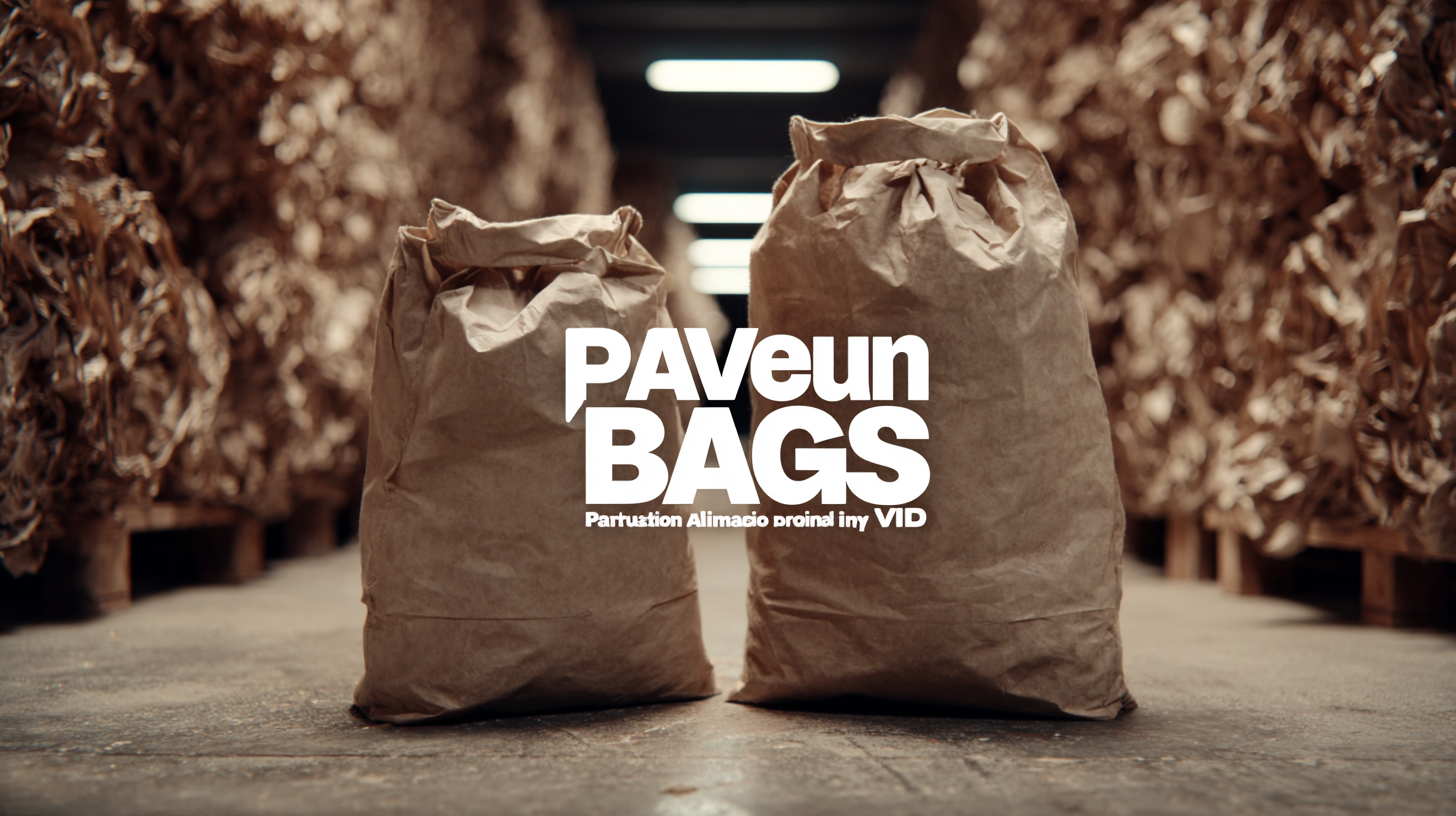In the quest for superior cleaning solutions, the choice of vacuum bags plays a pivotal role in enhancing efficiency and performance. Paper Vacuum Bags, commonly used in a variety of home and commercial vacuum cleaners, have long been favored for their affordability and ease of disposal. However, recent studies, including a report from the Institute of Home Cleaning Technology, suggest that while Paper Vacuum Bags capture around 70% of particles, alternatives like HEPA-filtered cloth bags or high-efficiency filters can improve this rate significantly, reaching up to 99%. As consumers become increasingly conscious of indoor air quality and the environmental impact of their cleaning choices, exploring efficient alternatives to conventional Paper Vacuum Bags has become essential. In this blog, we will delve into the top strategies for implementing these alternatives, ensuring both a cleaner environment and enhanced cleaning efficiency.

Traditional vacuum bags have served homeowners well for many years, but they come with notable limitations that can hinder effective cleaning. One major issue is their capacity. Once a bag is full, suction power diminishes significantly, making it harder to pick up dirt and debris. Additionally, conventional vacuum bags can be less efficient at trapping allergens and fine particles, which can compromise the air quality in your home.
To address these limitations, consider using a bagless vacuum cleaner. Bagless models use cyclone technology to separate dirt from the air, ensuring sustained suction power throughout cleaning sessions. Moreover, they often come with HEPA filters that capture microscopic allergens, promoting a healthier living environment.
**Tips:** Regularly clean or replace your vacuum's filters to maintain optimal performance. If you opt for vacuum bags, choose high-efficiency particulate air (HEPA) bags to improve filtration. Lastly, ensure you empty your vacuum or clean the canister often to prevent clogs and maintain robust suction.

In the quest for efficient cleaning solutions, the evolution of vacuum bag technology has introduced innovative materials that go beyond traditional paper options. Modern alternatives, such as HEPA filters and reusable fabric bags, not only enhance suction power but also improve filtration efficiency. These materials are designed to capture a greater variety of allergens and dust particles, making them ideal for households concerned about air quality.
Innovative materials also focus on sustainability. For instance, many new vacuum bags are crafted from biodegradable or recyclable substances, catering to eco-conscious consumers who prioritize reducing waste. Additionally, the development of washable bags provides a cost-effective solution, allowing users to maintain hygiene without the frequent need for replacements. By exploring these alternatives, cleaning becomes not just more efficient but also more environmentally friendly, proving that advancements in technology can lead to healthier living spaces.
When it comes to vacuuming, the choice of vacuum bags can significantly impact overall performance, especially when comparing cloth and paper vacuum bags. Cloth vacuum bags are known for their durability and reusability, making them an eco-friendly choice for many homeowners. They can hold more dirt and debris before needing replacement, which can translate to fewer trips to the store and less waste. Additionally, cloth bags often have superior filtration capabilities, capturing finer particles and allergens that paper bags might miss.
On the other hand, paper vacuum bags offer convenience and efficiency. They are typically designed for single use, which means no cleaning or maintenance is required. This can be especially beneficial for households that prioritize quick and straightforward cleaning solutions. However, it’s crucial to choose high-quality paper bags, as cheaper options may tear or become clogged more easily.
**Tip:** For enhanced cleaning, consider alternating between cloth and paper vacuum bags based on your cleaning needs. Using cloth bags for general cleaning and paper bags when tackling larger messes can provide optimal performance. Additionally, always ensure that you regularly check and replace your vacuum bags to maintain vacuum efficiency.
| Vacuum Bag Type | Filtration Efficiency (%) | Dust Capacity (liters) | Durability (uses) | Price ($) |
|---|---|---|---|---|
| Cloth Vacuum Bag | 99.5 | 3.5 | 50 | 15 |
| Paper Vacuum Bag | 95.0 | 2.0 | 20 | 10 |
| High-Efficiency Paper Bag | 98.0 | 2.5 | 30 | 12 |
| Reusable Cloth Bag | 99.0 | 4.0 | 70 | 20 |
As the global vacuum cleaner market is anticipated to soar from $44.24 billion in 2023 to $74.98 billion by 2030, with a compound annual growth rate (CAGR) of 7.8%, there is an increasing demand for eco-friendly alternatives in cleaning solutions. Sustainable vacuum bag options are gaining traction as consumers become more environmentally conscious. Traditional paper vacuum bags often contribute to landfill waste, but innovative biodegradable and reusable alternatives are now available, promoting a cleaner home without compromising on performance.
One such sustainable solution is refillable cleaning products that minimize plastic waste. By mixing cleaning concentrates with tap water in refillable bottles, users can significantly reduce their ecological footprint while maintaining effective cleaning standards. Moreover, these products not only offer practicality and ease but also align with the growing trend of green living, resonating with the values of eco-aware consumers. As brands innovate and evolve, it becomes increasingly crucial to make conscious choices that ensure a cleaner home and a healthier planet for future generations.
When it comes to maintaining a clean home, selecting the right vacuum bag alternative can significantly enhance your cleaning efficiency. With an array of options available, it’s essential to consider your specific needs in order to choose the most suitable product.
One key tip is to evaluate the type of debris you typically encounter. For households with pets, for example, bags designed to handle pet hair and dander can prove invaluable. Look for vacuum bags that feature specialized filters or materials that trap allergens effectively. Additionally, consider the capacity of the bag; larger options may be preferable for busy households to minimize frequent changes.
Another important aspect to keep in mind is compatibility with your vacuum model. Always check that the chosen alternative works seamlessly with your vacuum cleaner to avoid any functionality issues. Reading reviews and seeking recommendations can also guide you in making an informed decision. By focusing on these factors, you can find a vacuum bag alternative that not only meets your cleaning requirements but also enhances your overall home maintenance experience.

